-
EXECUTIVE SUMMARY
-
MARKET INTRODUCTION
-
Definition
-
Scope of the Study
- Research Objective
- Assumptions
- Limitations
-
RESEARCH METHODOLOGY
-
Overview
-
Data Mining
-
Secondary Research
-
Primary Research
- Primary Interviews and Information Gathering Process
- Breakdown of Primary Respondents
-
Forecasting Model
-
Market Size Estimation
- Bottom-Up Approach
- Top-Down Approach
-
Data Triangulation
-
Validation
-
MARKET DYNAMICS
-
Overview
-
Drivers
-
Restraints
-
Opportunities
-
MARKET FACTOR ANALYSIS
-
Value Chain Analysis
-
Porter’s Five Forces Analysis
- Bargaining Power of Suppliers
- Bargaining Power of Buyers
- Threat of New Entrants
- Threat of Substitutes
- Intensity of Rivalry
-
COVID-19 Impact Analysis
- Market Impact Analysis
- Regional Impact
- Opportunity and Threat Analysis
-
GLOBAL RETAIL LOGISTICS MARKET, BY SOLUTION
-
Overview
-
Commerce enablement
-
Supply chain solutions
-
Reverse logistics & liquidation
-
Transportation Management
-
Others
-
GLOBAL RETAIL LOGISTICS MARKET, BY TYPE
-
Overview
-
Conventional retail logistics
-
E-commerce retail logistics
-
GLOBAL RETAIL LOGISTICS MARKET, BY MODE OF TRANSPORT
-
Overview
-
Roadways
-
Railways
-
Airways
-
Waterways
-
GLOBAL RETAIL LOGISTICS MARKET, BY REGION
-
Overview
-
North America
- US
- Canada
-
Europe
- Germany
- France
- UK
- Italy
- Spain
- Rest of Europe
-
Asia-Pacific
- China
- India
- Japan
- South Korea
- Australia
- Rest of Asia-Pacific
-
Rest of the World
- Middle East
- Africa
- Latin America
-
COMPETITIVE LANDSCAPE
-
Overview
-
Competitive Analysis
-
Market Share Analysis
-
Major Growth Strategy in the Global Retail Logistics Market,
-
Competitive Benchmarking
-
Leading Players in Terms of Number of Developments in the Global Retail Logistics Market,
-
Key developments and Growth Strategies
- New Product Launch/Service Deployment
- Merger & Acquisitions
- Joint Ventures
-
Major Players Financial Matrix
- Sales & Operating Income, 2022
- Major Players R&D Expenditure. 2022
-
COMPANY PROFILES
-
DSV
- Company Overview
- Financial Overview
- Products Offered
- Key Developments
- SWOT Analysis
- Key Strategies
-
XPO Logistics, Inc.
- Company Overview
- Financial Overview
- Products Offered
- Key Developments
- SWOT Analysis
- Key Strategies
-
Kuehne+Nagel International
- Company Overview
- Financial Overview
- Products Offered
- Key Developments
- SWOT Analysis
- Key Strategies
-
C.H Robinson Worldwide, Inc.
- Company Overview
- Financial Overview
- Products Offered
- Key Developments
- SWOT Analysis
- Key Strategies
-
FedEx
- Company Overview
- Financial Overview
- Products Offered
- Key Developments
- SWOT Analysis
- Key Strategies
-
APL LOGISTICS LTD
- Company Overview
- Financial Overview
- Products Offered
- Key Developments
- SWOT Analysis
- Key Strategies
-
Nippon Express
- Company Overview
- Financial Overview
- Products Offered
- Key Developments
- SWOT Analysis
- Key Strategies
-
Schneider
- Company Overview
- Financial Overview
- Products Offered
- Key Developments
- SWOT Analysis
- Key Strategies
-
United Parcel Service
- Company Overview
- Financial Overview
- Products Offered
- Key Developments
- SWOT Analysis
- Key Strategies
-
DHL International GmbH
- Company Overview
- Financial Overview
- Products Offered
- Key Developments
- SWOT Analysis
- Key Strategies
-
APPENDIX
-
References
-
Related Reports
-
-
LIST OF TABLES
-
GLOBAL RETAIL LOGISTICS MARKET, SYNOPSIS, 2025-2034
-
GLOBAL RETAIL LOGISTICS MARKET, ESTIMATES & FORECAST, 2025-2034 (USD BILLION)
-
GLOBAL RETAIL LOGISTICS MARKET, BY SOLUTION, 2025-2034 (USD BILLION)
-
GLOBAL RETAIL LOGISTICS MARKET, BY TYPE, 2025-2034 (USD BILLION)
-
GLOBAL RETAIL LOGISTICS MARKET, BY MODE OF TRANSPORT, 2025-2034 (USD BILLION)
-
NORTH AMERICA: RETAIL LOGISTICS MARKET, BY SOLUTION, 2025-2034 (USD BILLION)
-
NORTH AMERICA: RETAIL LOGISTICS MARKET, BY TYPE, 2025-2034 (USD BILLION)
-
NORTH AMERICA: RETAIL LOGISTICS MARKET, BY MODE OF TRANSPORT, 2025-2034 (USD BILLION)
-
US: RETAIL LOGISTICS MARKET, BY SOLUTION, 2025-2034 (USD BILLION)
-
US: RETAIL LOGISTICS MARKET, BY TYPE, 2025-2034 (USD BILLION)
-
US: RETAIL LOGISTICS MARKET, BY MODE OF TRANSPORT, 2025-2034 (USD BILLION)
-
CANADA: RETAIL LOGISTICS MARKET, BY SOLUTION, 2025-2034 (USD BILLION)
-
CANADA: RETAIL LOGISTICS MARKET, BY TYPE, 2025-2034 (USD BILLION)
-
CANADA: RETAIL LOGISTICS MARKET, BY MODE OF TRANSPORT, 2025-2034 (USD BILLION)
-
EUROPE: RETAIL LOGISTICS MARKET, BY SOLUTION, 2025-2034 (USD BILLION)
-
EUROPE: RETAIL LOGISTICS MARKET, BY TYPE, 2025-2034 (USD BILLION)
-
EUROPE: RETAIL LOGISTICS MARKET, BY MODE OF TRANSPORT, 2025-2034 (USD BILLION)
-
GERMANY: RETAIL LOGISTICS MARKET, BY SOLUTION, 2025-2034 (USD BILLION)
-
GERMANY: RETAIL LOGISTICS MARKET, BY TYPE, 2025-2034 (USD BILLION)
-
GERMANY: RETAIL LOGISTICS MARKET, BY MODE OF TRANSPORT, 2025-2034 (USD BILLION)
-
FRANCE: RETAIL LOGISTICS MARKET, BY SOLUTION, 2025-2034 (USD BILLION)
-
FRANCE: RETAIL LOGISTICS MARKET, BY TYPE, 2025-2034 (USD BILLION)
-
FRANCE: RETAIL LOGISTICS MARKET, BY MODE OF TRANSPORT, 2025-2034 (USD BILLION)
-
ITALY: RETAIL LOGISTICS MARKET, BY SOLUTION, 2025-2034 (USD BILLION)
-
ITALY: RETAIL LOGISTICS MARKET, BY TYPE, 2025-2034 (USD BILLION)
-
ITALY: RETAIL LOGISTICS MARKET, BY MODE OF TRANSPORT, 2025-2034 (USD BILLION)
-
SPAIN: RETAIL LOGISTICS MARKET, BY SOLUTION, 2025-2034 (USD BILLION)
-
SPAIN: RETAIL LOGISTICS MARKET, BY TYPE, 2025-2034 (USD BILLION)
-
SPAIN: RETAIL LOGISTICS MARKET, BY MODE OF TRANSPORT, 2025-2034 (USD BILLION)
-
UK: RETAIL LOGISTICS MARKET, BY SOLUTION, 2025-2034 (USD BILLION)
-
UK: RETAIL LOGISTICS MARKET, BY TYPE, 2025-2034 (USD BILLION)
-
UK: RETAIL LOGISTICS MARKET, BY MODE OF TRANSPORT, 2025-2034 (USD BILLION)
-
REST OF EUROPE: RETAIL LOGISTICS MARKET, BY SOLUTION, 2025-2034 (USD BILLION)
-
REST OF EUROPE: RETAIL LOGISTICS MARKET, BY TYPE, 2025-2034 (USD BILLION)
-
REST OF EUROPE: RETAIL LOGISTICS MARKET, BY MODE OF TRANSPORT, 2025-2034 (USD BILLION)
-
ASIA-PACIFIC: RETAIL LOGISTICS MARKET, BY SOLUTION, 2025-2034 (USD BILLION)
-
ASIA-PACIFIC: RETAIL LOGISTICS MARKET, BY TYPE, 2025-2034 (USD BILLION)
-
ASIA-PACIFIC: RETAIL LOGISTICS MARKET, BY MODE OF TRANSPORT, 2025-2034 (USD BILLION)
-
JAPAN: RETAIL LOGISTICS MARKET, BY SOLUTION, 2025-2034 (USD BILLION)
-
JAPAN: RETAIL LOGISTICS MARKET, BY TYPE, 2025-2034 (USD BILLION)
-
JAPAN: RETAIL LOGISTICS MARKET, BY MODE OF TRANSPORT, 2025-2034 (USD BILLION)
-
CHINA: RETAIL LOGISTICS MARKET, BY SOLUTION, 2025-2034 (USD BILLION)
-
CHINA: RETAIL LOGISTICS MARKET, BY TYPE, 2025-2034 (USD BILLION)
-
CHINA: RETAIL LOGISTICS MARKET, BY MODE OF TRANSPORT, 2025-2034 (USD BILLION)
-
INDIA: RETAIL LOGISTICS MARKET, BY SOLUTION, 2025-2034 (USD BILLION)
-
INDIA: RETAIL LOGISTICS MARKET, BY TYPE, 2025-2034 (USD BILLION)
-
INDIA: RETAIL LOGISTICS MARKET, BY MODE OF TRANSPORT, 2025-2034 (USD BILLION)
-
AUSTRALIA: RETAIL LOGISTICS MARKET, BY SOLUTION, 2025-2034 (USD BILLION)
-
AUSTRALIA: RETAIL LOGISTICS MARKET, BY TYPE, 2025-2034 (USD BILLION)
-
AUSTRALIA: RETAIL LOGISTICS MARKET, BY MODE OF TRANSPORT, 2025-2034 (USD BILLION)
-
SOUTH KOREA: RETAIL LOGISTICS MARKET, BY SOLUTION, 2025-2034 (USD BILLION)
-
SOUTH KOREA: RETAIL LOGISTICS MARKET, BY TYPE, 2025-2034 (USD BILLION)
-
SOUTH KOREA: RETAIL LOGISTICS MARKET, BY MODE OF TRANSPORT, 2025-2034 (USD BILLION)
-
REST OF ASIA-PACIFIC: RETAIL LOGISTICS MARKET, BY SOLUTION, 2025-2034 (USD BILLION)
-
REST OF ASIA-PACIFIC: RETAIL LOGISTICS MARKET, BY TYPE, 2025-2034 (USD BILLION)
-
REST OF ASIA-PACIFIC: RETAIL LOGISTICS MARKET, BY MODE OF TRANSPORT, 2025-2034 (USD BILLION)
-
REST OF THE WORLD: RETAIL LOGISTICS MARKET, BY SOLUTION, 2025-2034 (USD BILLION)
-
REST OF THE WORLD: RETAIL LOGISTICS MARKET, BY TYPE, 2025-2034 (USD BILLION)
-
REST OF THE WORLD: RETAIL LOGISTICS MARKET, BY MODE OF TRANSPORT, 2025-2034 (USD BILLION)
-
MIDDLE EAST: RETAIL LOGISTICS MARKET, BY SOLUTION, 2025-2034 (USD BILLION)
-
MIDDLE EAST: RETAIL LOGISTICS MARKET, BY TYPE, 2025-2034 (USD BILLION)
-
MIDDLE EAST: RETAIL LOGISTICS MARKET, BY MODE OF TRANSPORT, 2025-2034 (USD BILLION)
-
AFRICA: RETAIL LOGISTICS MARKET, BY SOLUTION, 2025-2034 (USD BILLION)
-
AFRICA: RETAIL LOGISTICS MARKET, BY TYPE, 2025-2034 (USD BILLION)
-
AFRICA: RETAIL LOGISTICS MARKET, BY MODE OF TRANSPORT, 2025-2034 (USD BILLION)
-
LATIN AMERICA: RETAIL LOGISTICS MARKET, BY SOLUTION, 2025-2034 (USD BILLION)
-
LATIN AMERICA: RETAIL LOGISTICS MARKET, BY TYPE, 2025-2034 (USD BILLION)
-
LATIN AMERICA: RETAIL LOGISTICS MARKET, BY MODE OF TRANSPORT, 2025-2034 (USD BILLION)
-
LIST OF FIGURES
-
RESEARCH PROCESS
-
MARKET STRUCTURE FOR THE GLOBAL RETAIL LOGISTICS MARKET
-
MARKET DYNAMICS FOR THE GLOBAL RETAIL LOGISTICS MARKET
-
GLOBAL RETAIL LOGISTICS MARKET, SHARE (%), BY SOLUTION, 2022
-
GLOBAL RETAIL LOGISTICS MARKET, SHARE (%), BY TYPE, 2022
-
GLOBAL RETAIL LOGISTICS MARKET, SHARE (%), BY MODE OF TRANSPORT, 2022
-
GLOBAL RETAIL LOGISTICS MARKET, SHARE (%), BY REGION, 2022
-
NORTH AMERICA: RETAIL LOGISTICS MARKET, SHARE (%), BY REGION, 2022
-
EUROPE: RETAIL LOGISTICS MARKET, SHARE (%), BY REGION, 2022
-
ASIA-PACIFIC: RETAIL LOGISTICS MARKET, SHARE (%), BY REGION, 2022
-
REST OF THE WORLD: RETAIL LOGISTICS MARKET, SHARE (%), BY REGION, 2022
-
GLOBAL RETAIL LOGISTICS MARKET: COMPANY SHARE ANALYSIS, 2022 (%)
-
DSV: FINANCIAL OVERVIEW SNAPSHOT
-
DSV: SWOT ANALYSIS
-
XPO LOGISTICS, INC.: FINANCIAL OVERVIEW SNAPSHOT
-
XPO LOGISTICS, INC.: SWOT ANALYSIS
-
KUEHNE+NAGEL INTERNATIONAL: FINANCIAL OVERVIEW SNAPSHOT
-
KUEHNE+NAGEL INTERNATIONAL: SWOT ANALYSIS
-
C.H ROBINSON WORLDWIDE, INC.: FINANCIAL OVERVIEW SNAPSHOT
-
C.H ROBINSON WORLDWIDE, INC.: SWOT ANALYSIS
-
FEDEX.: FINANCIAL OVERVIEW SNAPSHOT
-
FEDEX.: SWOT ANALYSIS
-
APL LOGISTICS LTD: FINANCIAL OVERVIEW SNAPSHOT
-
APL LOGISTICS LTD: SWOT ANALYSIS
-
NIPPON EXPRESS: FINANCIAL OVERVIEW SNAPSHOT
-
NIPPON EXPRESS: SWOT ANALYSIS
-
SCHNEIDER: FINANCIAL OVERVIEW SNAPSHOT
-
SCHNEIDER: SWOT ANALYSIS
-
UNITED PARCEL SERVICE: FINANCIAL OVERVIEW SNAPSHOT
-
UNITED PARCEL SERVICE: SWOT ANALYSIS
-
DHL INTERNATIONAL GMBH: FINANCIAL OVERVIEW SNAPSHOT
-
DHL INTERNATIONAL GMBH: SWOT ANALYSIS

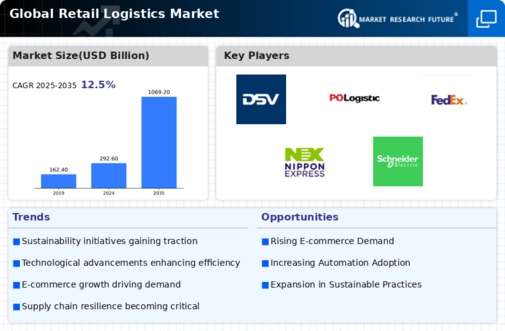

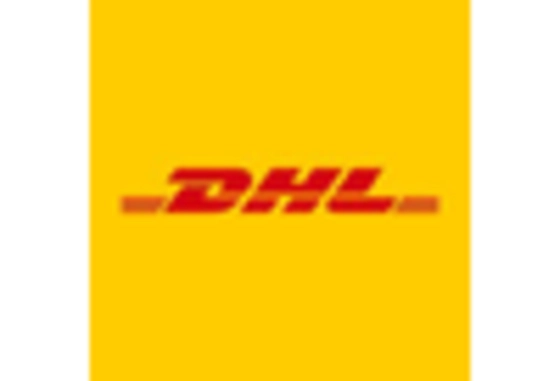
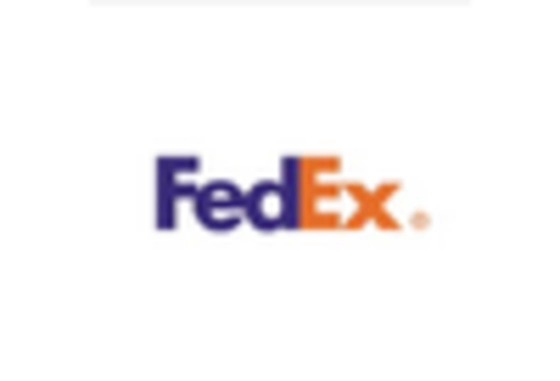
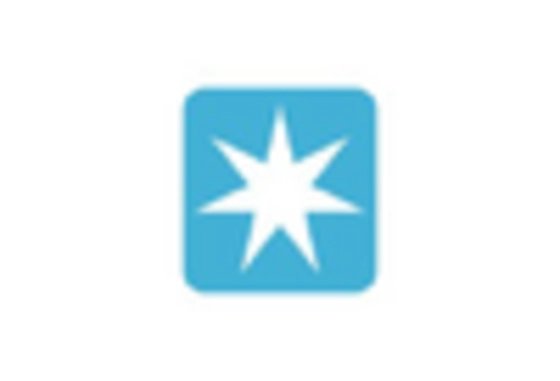

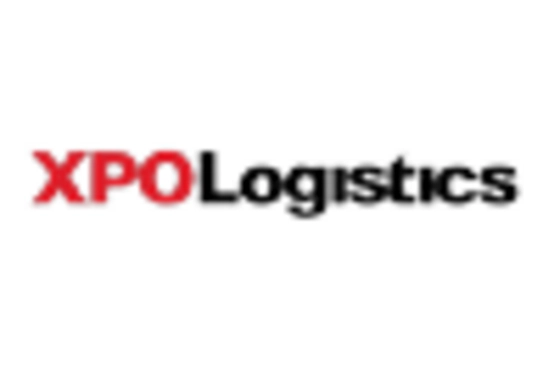

Leave a Comment